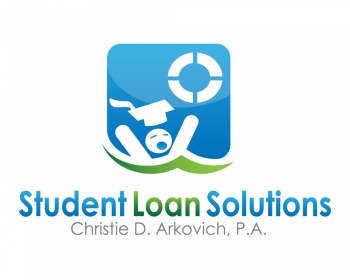 The question as to whether the private student loans were incurred “solely to pay qualified education expenses” under 26 U.S.C. Section 221(d)(1) is where these cases are won or lost.
The question as to whether the private student loans were incurred “solely to pay qualified education expenses” under 26 U.S.C. Section 221(d)(1) is where these cases are won or lost.
In Conti v. Arrowood Indemnity Co., No. 20-1172 (6th Cir. 12/14/20), the Court affirmed a bankruptcy court’s judgment against the borrower, and refused to consider arguments that were not raised at the trial court level.
Why is Conti decision important? Two reasons. First, it put a lot of emphasis on the purpose of the loans – as opposed to their actual use. Court vary on this approach and it may depend upon where you live as to what approach is used by your courts. Second, the Sixth Circuit emphasized the need to fully flesh out all available legal arguments and facts at the trial court level.
First, the Court looked to the initial purpose of the loans, not their actual uses, to determine if the student loans fell within the scope of (8)(B). In this case, the applications and promissory notes expressly tied the loans to the borrower’s student status for a given enrollment period. They also limited the loan amount to the “full cost of education less any financial aid you are receiving”. The loans were disbursed directly to the school and use of the funds was limited to “specific educational expenses” and included an area for the school to certify that the amount would not exceed the school’s cost of education – minus any applicable scholarships or other financial aid including grants.
Cost of Education – Why is this term important?
Back in 2005, the bankruptcy laws were amended to ensure private student loans were held to the same discharge language as federal loans. Many lenders took advantage of this and started to loan more money than what was actually needed to attend school, and then have tried to claim that their loans were non-dischargeable student loans as opposed to regular old consumer loans.
This is the argument we are using in many of our adversary cases to eliminate private student loan debt. There are more arguments available, but this is a biggie!
For those that want to know more, here’s the nitty gritty: Subsection (8)(B) was enacted as part of the Bankruptcy Abuse Prevention and Consumer Protection Act of 2005, Pub. L. No. 109-8, 119 Stat. 23. It expanded to private student loans § 523(a)(8)’s existing discharge exception for government- and non-profit-backed educational loans. See 4 Collier on Bankruptcy ¶ 523.14[2] (Lexis 2020). Subsection (8)(B) defines qualified education loans by cross-reference to the tax code, which in turn defines them, in relevant part, as: “any indebtedness incurred by the taxpayer solely to pay qualified higher education expenses.” 26 U.S.C. § 221(d)(1). That same section further defines qualified higher education expenses, in relevant part, as “the cost of attendance (as defined in section 472 of the Higher Education Act of 1965, 20 U.S.C. 1087ll . . .) at an eligible educational institution, reduced by the sum of” applicable scholarships or financial aid. § 221(d)(2). Finally, 20 U.S.C. § 1087ll lists a series of expenses that comprise the “cost of attendance,” including sums for tuition & fees, room & board, books, materials, supplies, transportation, and “miscellaneous personal expenses” for enrolled students, in amounts determined by the university.
In the Conti appeal, several issues were raised: including the specific recipient of the loan disbursement; the precise cost of attendance and applicable financial aid; whether Conti was an “eligible” student; and whether the school itself was a covered educational institution.
The problem was that Conti “forfeited any dispute as to these facts by failing to raise them below” [at the trial court level]. Conti also did not point to any evidence in the record other than allegations in her complaint, that created a dispute. Rule 101 of any appeal — you must raise the issues and relevant facts at the trial court level and preserve any appeal on the record.
These are complicated cases. If you want to discharge private student loans, you need to file an adversary case to do so. You need to hire experienced legal counsel to best present the facts and legal arguments. We’re talking about huge amounts — often 50k – 200k – that’s our average private student loan balance. Life changing numbers.
 Reboot Your Life: Tampa Student Loan and Bankruptcy Attorney Blog
Reboot Your Life: Tampa Student Loan and Bankruptcy Attorney Blog


